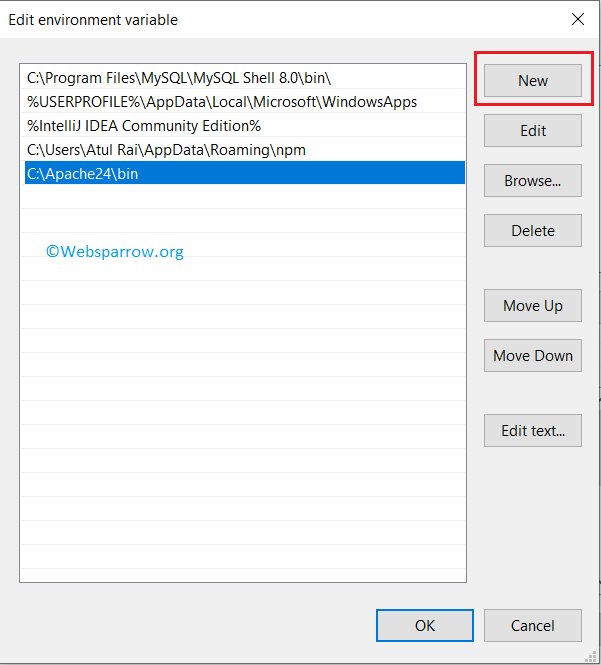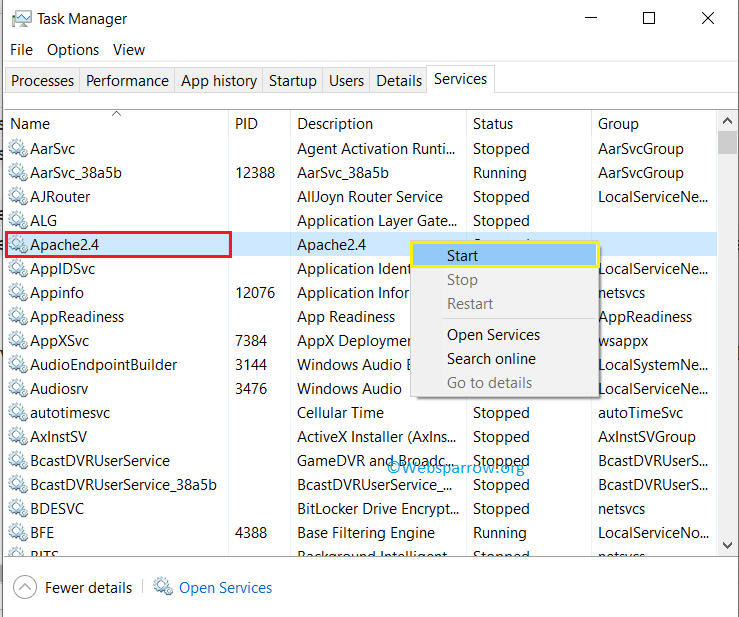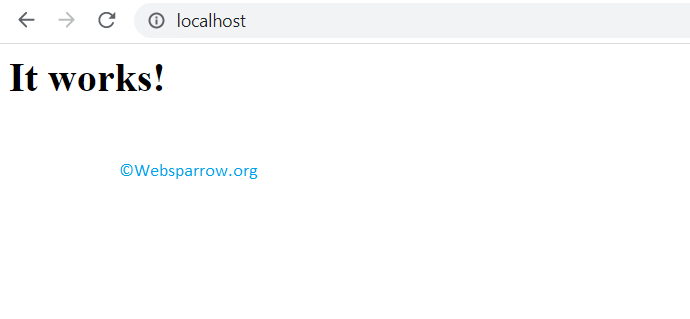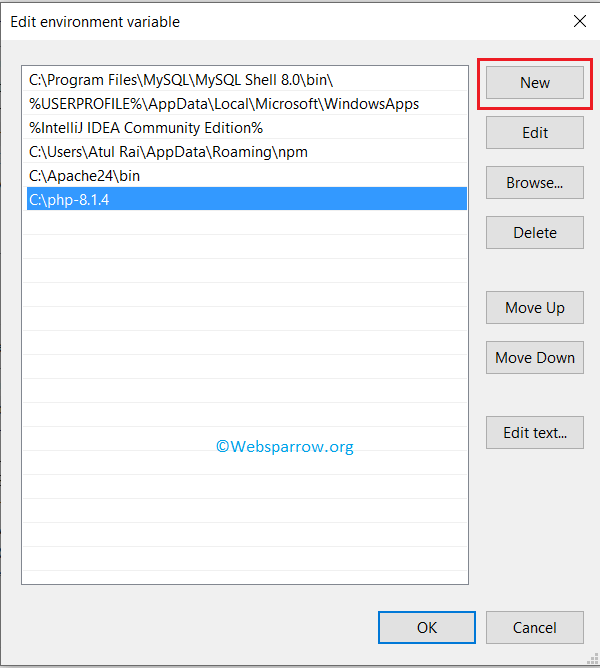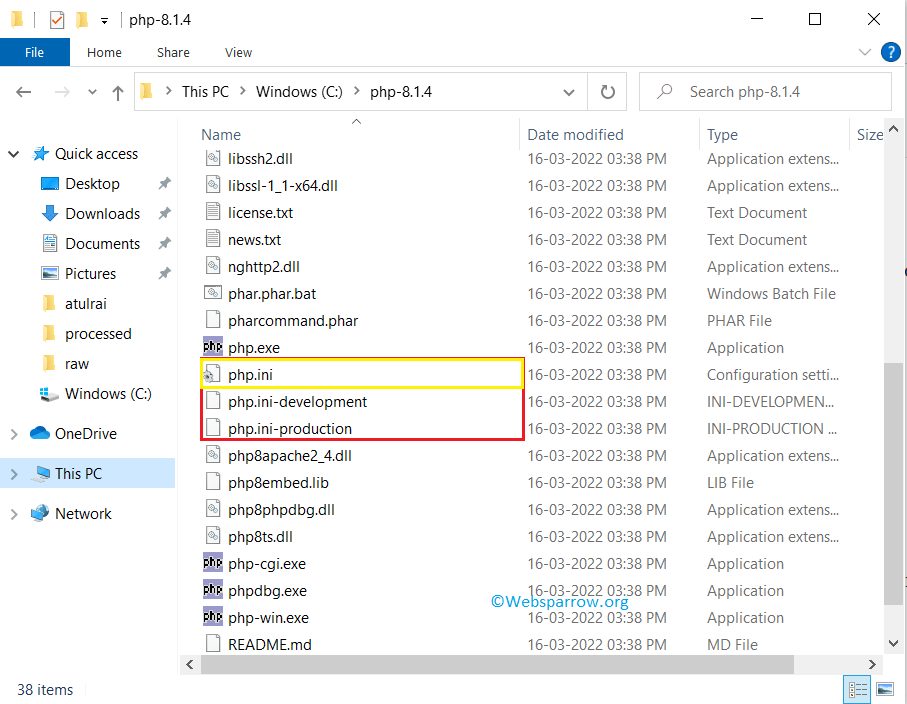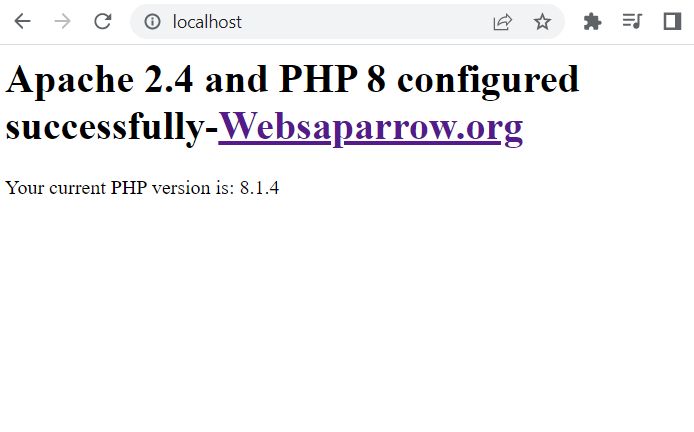- How to install Apache 2.4 and PHP 8 on a Windows Machine
- 1. Prerequisites
- 2. Install Apache
- 3. Install PHP 8
- 4. Configure Apache and PHP
- 5. Test the configuration
- References
- Running PHP on Apache httpd
- Using proxy_fcgi and php-fpm (for 2.4)
- Using php with fastcgi (for 2.2 and older)
- Using php with fcgid (for 2.2 and older)
- Setting up wordpress with php-fpm
- Using mod_php as a DSO with a threaded mpm (2.0 and newer)
- Using mod_php as a DSO (legacy)
- Why you shouldn’t use mod_php with the prefork mpm anymore
- How to use it anyway
How to install Apache 2.4 and PHP 8 on a Windows Machine
In this tutorial, you will learn how to install and configure Apache 2.4 and PHP 8 on a Windows machine. We all know Apache HTTP Server is an open-source cross-platform and free webserver to run web applications and similarly PHP is a free and open-source scripting language used to develop web applications.
To run the PHP code on a Windows machine, first, you’ll need to install and configure a web server (Apache) that executes the PHP application. And on this page, you will find the step-by-step guide on “How to install Apache 2.4 and PHP 8 on a Windows Machine”.
P.S. Tested with Apache 2.4 and PHP 8.1.4 on a Windows 10 machine.
1. Prerequisites
Download the Apache 2.4.x and PHP 8 from its official websites, extract the downloaded file and move it to the C drive.
1.1 Download Apache 2.4.x – Depending on your system build download the binary zip file accordingly.
1.2 Download PHP 8 – Similarly, depending on your system build download the Thread Safe version of PHP.
Before jumping to the main configuration part, be sure you installed latest 14.31.31103.0 Visual C++ Redistributable Visual Studio 2015-2022 : vc_redist_x64 or vc_redist_x86 software.
2. Install Apache
To install the Apache HTTP Server on a local Windows machine move the downloaded and extracted Apache 2.4 binary files to the C drive and follow the below steps:
Step 2.1: Go to the Apache 2.4 bin directory path C:\Apache24\bin (it might be different in your case) and set it into your system environment variable path.
Step 2.2: Open the command prompt with admin privileges and run the httpd -k install command to install the Apache services.
C:\WINDOWS\system32>httpd -k install Installing the 'Apache2.4' service The 'Apache2.4' service is successfully installed. Testing httpd.conf. Errors reported here must be corrected before the service can be started. AH00558: httpd: Could not reliably determine the server's fully qualified domain name, using fe80::ccb2:109d:6198:a489. Set the 'ServerName' directive globally to suppress this messageStep 2.3: Start the Apache service with the command httpd -k start or directly through the Task Manager » Services » Search for Apache2.4 » Right-click on the service » Start .
By default, Apache HTTP Server runs on port 80, make sure no other services/servers running on this port.
Step 2.4: Open the web browser and hit the default Apache localhost URL i.e localhost or localhost:80 . If everything is configured correctly, you will see the default index.html web page contents and it is located inside the C:\Apache24\htdocs directory.
3. Install PHP 8
The next step is to install PHP 8. To do that, similarly, move the downloaded and extracted PHP 8 binary files to the C drive and follow the below steps:
Step 3.1: Copy the PHP 8 home path i.e C:\php-8.1.4 and set it into your machine environment variable.
Step 3.2: Open the command prompt and type php -v to check whether the path is set correctly or not. If the PHP path is set correctly, it will print the PHP version.
C:\WINDOWS\system32>php -v PHP 8.1.4 (cli) (built: Mar 16 2022 09:33:31) (ZTS Visual C++ 2019 x64) Copyright (c) The PHP Group Zend Engine v4.1.4, Copyright (c) Zend Technologies4. Configure Apache and PHP
Now it’s time to configure Apache HTTP Server with PHP 8.
Step 4.1: Go to the C:\Apache24\conf directory, inside the conf directory edit the httpd.conf file. Go to the end of the file and add the below configuration because, in Apache, PHP is loaded as a module.
# Note: Repalce php_module location with your PHP path and # if the php8apache2_4.dll is not available, # download the non thread safe version of PHP. LoadModule php_module "C:\php-8.1.4\php8apache2_4.dll" AddHandler application/x-httpd-php .php PHPIniDir "C:\php-8.1.4"Step 4.2: Go to the PHP home directory C:\php-8.1.4, and you will find two configuration files php.ini-development and php.ini-production . Create a copy of php.ini-development and rename it to php.ini
Step 4.3: Again open the httpd.conf file and search for ServerName, uncomment and edit the ServerName with localhost .
# ServerName gives the name and port that the server uses to identify itself. # This can often be determined automatically, but we recommend you specify # it explicitly to prevent problems during startup. # # If your host doesn't have a registered DNS name, enter its IP address here. # ServerName localhostAnd in the same file also search for DirectoryIndex, and append the default index.php file.
# DirectoryIndex: sets the file that Apache will serve if a directory # is requested. # DirectoryIndex index.html index.php Step 4.4: Open the command prompt and run the httpd -t command to validate whether everything is configured correctly, it will return Syntax OK if everything is configured correctly.
C:\WINDOWS\system32>httpd -t Syntax OK5. Test the configuration
To test the Apache 2.4 and PHP 8 configuration, restart the Apache2.4 service from the Task Manager and rename the index.html file to index.php from the C:\Apache24\htdocs directory and add the below piece of code.
Apache 2.4 and PHP 8 configured successfully-Websaparrow.org'; echo ' Your current PHP version is: ' . phpversion(); header("Refresh:10; url=https://websparrow.org"); ?>Open the web browser and hit the localhost in the URL bar, you will get the following details:
References
Running PHP on Apache httpd
The scope of this document is to enumerate all possible configuration scenarios to allow httpd to serve php content.
Using proxy_fcgi and php-fpm (for 2.4)
This method is preferred above all other recipes, and is suitable for versions 2.4 and newer. Not only it allows you to discern and diagnose problems related to PHP more quickly, but also you will be able to use a faster and more scalable threaded mpm such as event or worker, which will significantly reduce the memory footprint of your httpd server.
Using php with fastcgi (for 2.2 and older)
This method is suitable for versions 2.2 and older. It allows for a threaded mpm such as worker, which will significantly reduce the RAM requirements on your server.
Using php with fcgid (for 2.2 and older)
This method is suitable for versions 2.0 or 2.2. It allows for a threaded mpm such as worker, which will significantly reduce the RAM requirements on your server. And mod_fcgid is an official Apache module.
Setting up wordpress with php-fpm
Using mod_php as a DSO with a threaded mpm (2.0 and newer)
This approach is identical to the next recipe, with the exception that a threaded mpm such as event or worker can be used. The main requirement is that the php system libraries and DSO must be (re)compiled with the thread-safe flags.
If apache httpd 2.0 or older is used, it must be recompiled to change the mpm. For 2.4, loading the appropriate mpm module suffices.
Special care must be taken to ensure that workers are restarted often enough (MaxConnectionsPerChild > 0) since child processes are still prone to php memory leaks and processes are likely to consume large amounts of RAM and deplete the available system resources.
This is probably the least used approach of all, due to the headaches of maintaining a thread-safe php library, and since most linux distributions do not ship those packages.
Using mod_php as a DSO (legacy)
This method is the oldest and slowest possible configuration. It was suitable for version 2.2 and older, and requires the use of the prefork mpm.
Why you shouldn’t use mod_php with the prefork mpm anymore
- mod_php is loaded into every httpd process all the time. Even when httpd is serving static/non php content, that memory is in use.
- mod_php is not thread safe and forces you to stick with the prefork mpm (multi process, no threads), which is the slowest possible configuration
How to use it anyway
First, the module must be loaded:
LoadModule php5_module lib/httpd/modules/libphp5.so
Then, add the handler for the dso:
# Then, configure the handler for all files that end with .php
# A regexp such as \.(php|php4|php5)$ can also be used to support more extensions


